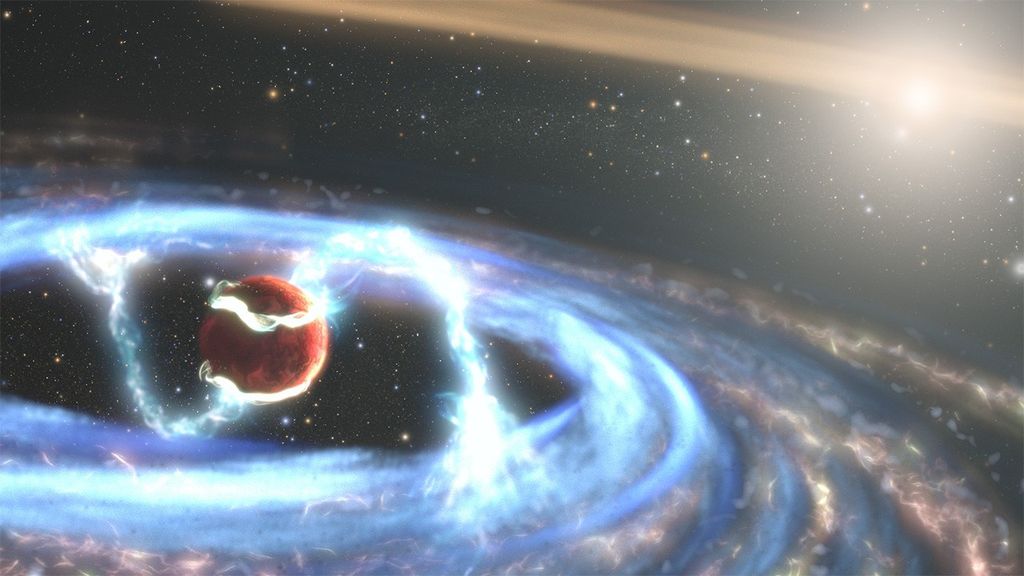Purple Haze
| PIA Number | PIA06090 |
|---|---|
| Language |
|
Encircled in purple stratospheric haze, Titan appears as a softly glowing sphere in this colorized image taken one day after Cassini's first flyby of the moon on July 2, 2004.
This image shows a thin, detached haze layer that appears to float above the main atmospheric haze. Because of its thinness, the high haze layer is best seen at the moon's limb. NASA's Voyager spacecraft detected such detached haze layers on Titan during their flybys in the early 1980s.
The image, which shows Titan's southern polar region, was taken using a spectral filter sensitive to wavelengths of ultraviolet light centered at 338 nanometers. The image has been false-colored to approximate what the human eye might see were our vision able to extend into the ultraviolet: The globe of Titan retains the pale orange hue our eyes usually see, and both the main atmospheric haze and the thin detached layer have been given their natural purple color. The haze layers have been brightened for visibility.
The best possible observations of the detached layer are made in ultraviolet light because the small haze particles which populate this part of Titan¿s upper atmosphere scatter short wavelengths more efficiently than longer visible or infrared wavelengths. This accounts for the bluish-purple color.
Images like this one reveal some of the key steps in the formation and evolution of Titan's haze. The process begins in the high atmosphere (at altitudes higher than 600 kilometers or 370 miles), where solar ultraviolet light breaks down methane and nitrogen molecules. The products react to form more complex organic molecules containing carbon, hydrogen and nitrogen, and these in turn combine to form the very small particles seen as high hazes. The small particles stick upon collision with one another, forming larger particles which fall deeper into the atmosphere to maintain the lower main haze layer which is thick enough to obscure the surface at visible wavelengths. The altitude of the detached haze layer observed by Cassini (near 500 kilometers or 310 miles) is significantly higher than the detached haze seen by Voyager (at 300 to 350 kilometers or 185 to 215 miles). The upward shift in haze altitude from Voyager to Cassini suggests the possibility of seasonality in haze production or atmospheric circulation strength.
The image was taken with the Cassini spacecraft narrow-angle camera on July 3, 2004, at a distance of about 789,000 kilometers (491,000 miles) from Titan and at a Sun-Titan-spacecraft, or phase, angle of 114 degrees. The image scale is 4.7 kilometers (2.9 miles) per pixel.
[This caption was modified on March 16, 2005.]
The Cassini-Huygens mission is a cooperative project of NASA, the European Space Agency and the Italian Space Agency. The Jet Propulsion Laboratory, a division of the California Institute of Technology in Pasadena, manages the mission for NASA's Science Mission Directorate, Washington, D.C. The Cassini orbiter and its two onboard cameras were designed, developed and assembled at JPL. The imaging team is based at the Space Science Institute, Boulder, Colo.
For more information about the Cassini-Huygens mission, visit http://saturn.jpl.nasa.gov and the Cassini imaging team home page, http://ciclops.org .
Image Credit:NASA/JPL/Space Science Institute




























